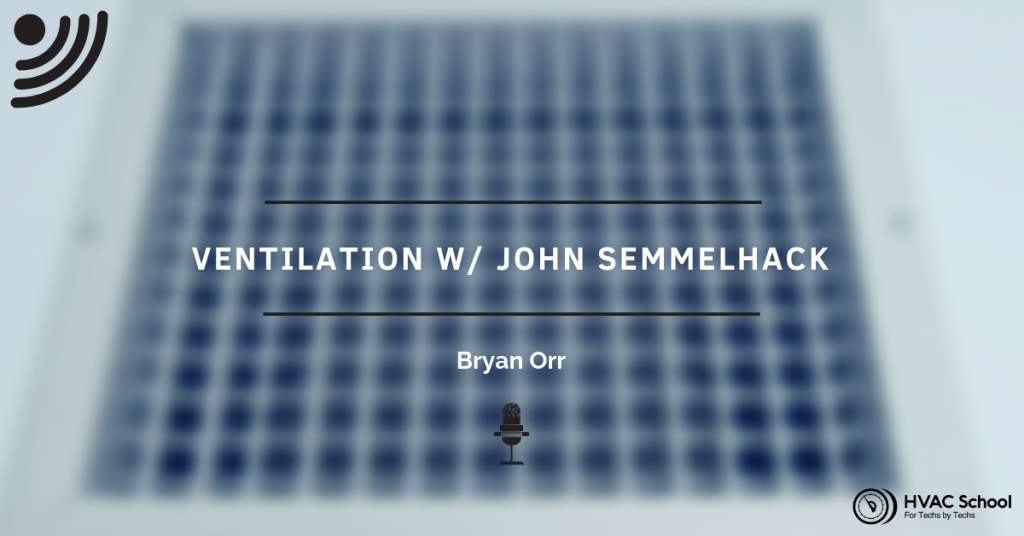Ventilation w/ John Semmelhack (Podcast)

John guides us through all aspects of ventilation and system design. He gives us a review of point ventilation, ASHRAE 62.2, whole-home strategies, and much more.
Nowadays, construction protocols instruct builders to make houses tighter than the builders of the past. The goal of building tighter homes is to give us more control over the temperature, quality, and energy impact of the outside air we bring into our homes.
Common sources of ventilation are local exhaust systems, including bath fans and kitchens. However, in tighter constructions, there is a greater need for whole-home strategies to bring in outside air and dilute indoor-generated pollutants. Some of those pollutants include VOCs, odors, and moisture. We must think about how to introduce that outside air into the home and how that outdoor air will impact heat loads, moisture levels, and air quality inside the home.
When we select equipment for airflow, we need to think about constant vs. intermittent flow. In humid climates, you also need to take extra steps to prevent moist outdoor air from leading to excess condensation in the home. Ventilation equipment either delivers outdoor air to each room or mixes that outdoor air with the return air. Try to ensure that the space temperature doesn't drop below the dew point, which can be a challenge in humid climates.
Ventilating dehumidification is a promising solution for HVAC system replacements and new constructions in humid climates. In cold, tight homes, ventilating dehumidification can keep a home dry enough to keep occupants comfortable in the winter.
John and Bryan also discuss:
- Why do people want energy efficiency?
- “Passive house” and airtightness standards
- Mixing air and filtration
- Carbon dioxide (CO2)
- ERVs vs. HRVs for balanced ventilation
- Fan cycler systems
- Duct installation quality
- Dedicated make-up air
- Fireplaces and gas appliances under negative pressure
Learn more about Think Little, John's company, at think-little.com/.
Learn more about Refrigeration Technologies HERE.
Author:









Comments
To leave a comment, you need to log in.
Log In